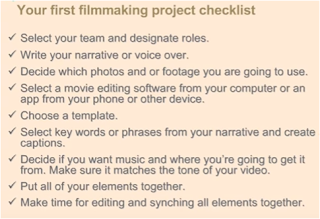Groups in the classroom can be organised by a teacher or students. Catherine Valentino in her article "Flexible Grouping" calls them teacher-led and student-led groups respectively. Teacher-led groups are an effective and efficient way of introducing material, summing-up the conclusions made by individual groups, meeting the common needs of a large or small group, and providing individual attention or instruction. Student-led groups can take many forms, but they all share a common feature-students control the group dynamics and maintain a voice in setting the agenda for the group to follow. Student-led groups provide opportunities for divergent thinking and encourage students to take responsibility for their own learning.
Students can be divided into groups in many different ways. Brame and Biel (2015) in their article "Group work: Using cooperative learning groups effectively" and Masley and Paranto (2008) in "Collaborative Group Work Protocols" suggest many interesting ideas about ways of grouping students for different needs.
Janelle Cox in her article "Flexible Grouping as a Differentiated Instruction Strategy" claims that "the key to successful grouping is to be flexible so you can meet each individual’s needs." Here are a few things to consider while creating flexible groups:
- Ask yourself, “What is the best type of configuration to meet my learning outcome for this activity?” Consider a teacher-led group (whole-class, small group, or an individual teacher-directed activity), or a student-led group (collaborative, performance-based, or pairs).
- Evaluate all assessment data and look over student-leaning profiles to help you form groups.
- Identify the most effective grouping design. For example, group students by gender, previous group, student selection, or teacher selection.
- Differentiate engaging activities for each group.
Successful grouping does not happen overnight. It take a little bit of planning and classroom management skills. When teachers group students for differentiated instruction, they should consider the following tips:
- Create a color-coded system or chart to help you (and students) know which group(s) they are in.
- Give specific instructions about the tasks groups must perform.
- Post written instructions and expectations so you don’t have to repeat yourself.
- Model and practice routines and procedures for getting into and out of groups. Develop a routine so your classroom isn’t utter chaos after a group task is complete.
- Set a specific time limit for students to complete their group work. It’s best to set an alarm so students know when the alarm goes off, they must proceed to the next activity quietly.
- Implement a student learning log for each group they are in. A color-coded one works best for students to keep track and record what they completed in each group.
Flexible grouping is a strategy that is developed over a period of time. To ensure successful grouping and promote maximum learning, it is essential that assessment is frequent, and that students are moved into appropriate groups regularly. To avoid any classroom chaos and disruptions, effective classroom management skills must be set into place.
Finally, not always flexible grouping can be successful and a teacher should take into account student's personality and preferences or dislikes as well. Otherwise, the results would not be positive. Teacher should be really attentive and use flexible grouping wisely.
Reference: Flexible Grouping Module












